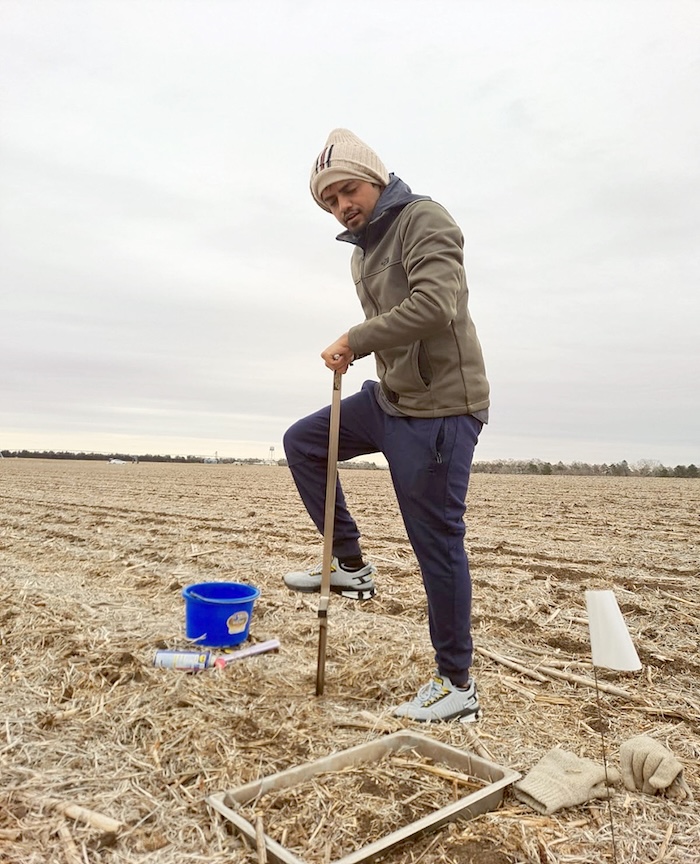The 2024 growing season brought drier-than-average conditions to much of Nebraska (Figure 1), impacting crop yields and altering soil nutrient dynamics, especially for rainfed crops. During drought, crop growth is reduced, hence nitrogen movement and uptake are often restricted, leading to higher-than-normal levels of residual soil nitrogen. This can be beneficial for the next growing season as it provides readily available nitrogen for the new crop, but it's important to monitor soil tests to determine the actual amount of residual nitrogen present.
As farmers look toward the 2025 season, this residual nitrogen might offer a valuable opportunity to optimize fertilizer planning, enabling cost reductions, improved crop yields, and enhanced environmental stewardship. Here’s how the farmers in dry-affected areas can effectively harness residual nitrogen for the coming season.
Why Residual Soil Nitrogen Increases After a Dry Year
Dry conditions limit nitrogen uptake in crops, as water is essential for nutrient transport and absorption. Without adequate moisture, nitrogen applied through fertilizers or naturally present in the soil often remains unused. Additionally, drought potentially reduces nitrogen losses from leaching and denitrification, allowing residual nitrogen — particularly nitrate — to accumulate in the soil profile, especially within the root zone.
Harnessing this residual nitrogen can provide a natural nutrient source for crops in the 2025 season, helping reduce the need for additional fertilizers, lowering costs, and preserving soil and water quality.
The Importance of Soil Sampling for Residual Nitrogen Assessment
To accurately gauge residual nitrogen levels, soil sampling is essential. Sampling the soil allows for a comprehensive view of nitrate levels across the soil profile. Here’s how soil sampling can help in optimizing nitrogen application:
- Timing of Soil Sampling: After a dry season, soil sampling is ideally conducted in the spring before planting. This timing accounts for any winter nitrogen losses from leaching, ensuring a more accurate picture of available nitrogen. However, if conditions allow and you prefer a preliminary view, fall sampling can be useful — particularly in low-leaching soils.
- Depth of Sampling: Sampling to 2 or 3 feet is critical, as nitrate can accumulate in lower soil layers after leaching from the surface. This comprehensive sampling depth provides the data needed to calculate an accurate nitrogen credit.
- Using Test Results for Fertilizer Adjustments: Soil test results will reveal the available nitrate concentration, allowing farmers to adjust their nitrogen applications accordingly. For example, if residual nitrate levels are high, farmers can reduce their spring nitrogen applications, minimizing both costs and the potential for nitrate leaching.
Benefits of Using Residual Nitrogen in Fertilizer Planning
- Cost Savings: By crediting residual nitrogen, farmers can significantly reduce the amount of nitrogen fertilizer applied. This is particularly valuable after a dry year, when fertilizer prices might fluctuate, and savings can help manage overall production costs.
- Environmental Protection: Excessive nitrogen application can lead to nitrate leaching into groundwater, a major environmental concern. By crediting residual nitrogen, farmers apply only what the crop needs, reducing the risk of nitrogen pollution and promoting more sustainable agriculture.
- Improved Crop Performance: Matching nitrogen applications to crop needs enhances nutrient uptake, which can improve crop health and yield. By accounting for residual nitrogen, plants receive adequate nitrogen without the stress of nutrient excess or deficiency.
Planning for Spring Nitrogen Needs

Incorporating residual nitrate-nitrogen from soil sampling into nitrogen fertilizer prescriptions can significantly reduce fertilizer costs per acre.
While residual nitrogen after a dry year provides a valuable resource, farmers should approach nitrogen management for the new season with flexibility. Use the following guidelines to ensure nitrogen applications meet crop needs without excess:
- Conduct Spring Soil Sampling: Even if you sampled in fall, a spring follow-up test is beneficial. This accounts for any nitrogen movement or losses that occurred over winter.
- Limit Early-season Applications: Apply only enough nitrogen at planting to meet initial growth needs, then follow up with side-dress applications as the crop grows. This approach minimizes early nitrogen losses and provides nutrients when plants can most efficiently use them.
- Use Decision Support Nitrogen Recommendation Tools: The UNL digital nitrogen calculator, variable rate application, and sensor-based technologies can further refine nitrogen applications. These tools help distribute nitrogen only where needed, maximizing efficiency across variable field conditions.
Summary
Following a dry season, residual soil nitrogen becomes a key resource for improving both economic and environmental outcomes in the next growing season. By measuring and crediting residual nitrogen through soil sampling, adjusting fertilizer applications, and adopting strategic nitrogen management practices, farmers can achieve a balanced approach that supports crop productivity and minimizes unnecessary fertilizer use. Harnessing residual nitrogen is a powerful tool for smarter fertilizer planning, ensuring each application maximizes benefit while protecting valuable soil and water resources.






